Overview of the South Korea eTA Application Process
The South Korea eTA application process involves several steps depending on your eTA type and purpose of visit. For short-term visits, a standard eTA process applies, while the Korea Electronic Travel Authorization (K-ETA) simplifies entry for eligible travelers.
eTA Application Process
- Determine the eTA Type: Identify the correct eTA based on your purpose (tourism, business, study, etc.).
- Prepare Required Documents: Gather necessary documents such as passport, application form, photos, financial proof, and itinerary.
- Submit the Application: Submit your documents to the South Korean embassy or consulate and pay the eTA fee.
- Attend an Interview (if necessary): For certain eTAs, an interview may be required for additional verification.
- Wait for Processing: eTA processing takes 1-6 Working Days for short-term eTAs.
K-ETA Process
- Check Eligibility: Confirm if you are from an eligible country for K-ETA.
- Complete the Application: Fill out the online application with travel details.
- Pay the Fee: Submit the application fee for processing.
- Receive Approval: Get approval via email, which allows entry for short-term visits.
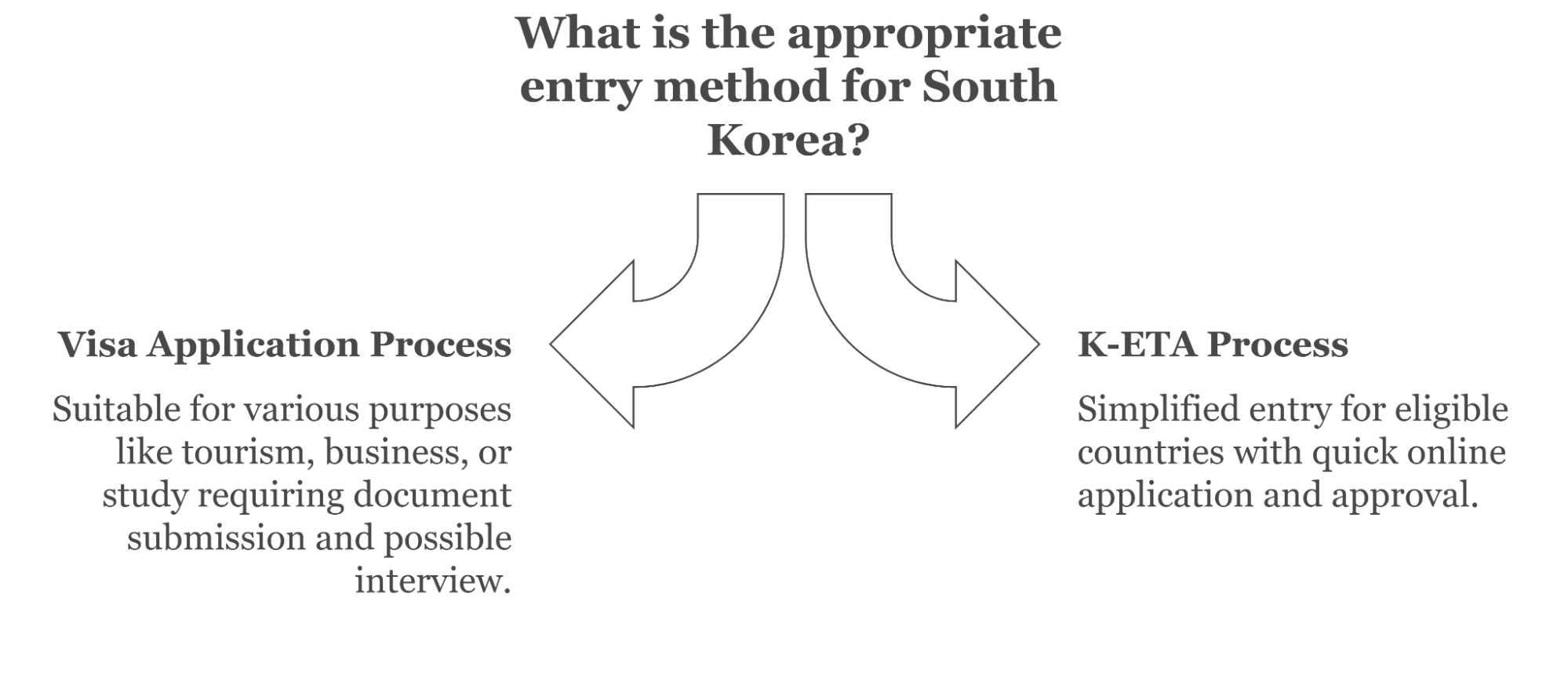
Methods to Check Your South Korea eTA Status
You can check the status of your South Korea eTA through several methods, depending on the type of eTA you’ve applied for and where you submitted your application.
Korea Electronic Travel Authorization (K-ETA) Status Check
For travelers from countries eligible for the K-ETA system, the process of checking your eTA status is simple. K-ETA is an online pre-authorization system that allows travelers to visit South Korea without a traditional eTA. If you’ve applied for K-ETA, checking your status can be done easily through the official website.
Steps:
- Visit the official K-ETA website: Go to www.k-eta.go.kr, the official K-ETA portal.
- Log in with your details: Use the same email address or passport number you used when submitting your application.
- Check your application status: After logging in, you will be able to view your eTA status. It will show whether your application has been approved, is still under review, or has been rejected.
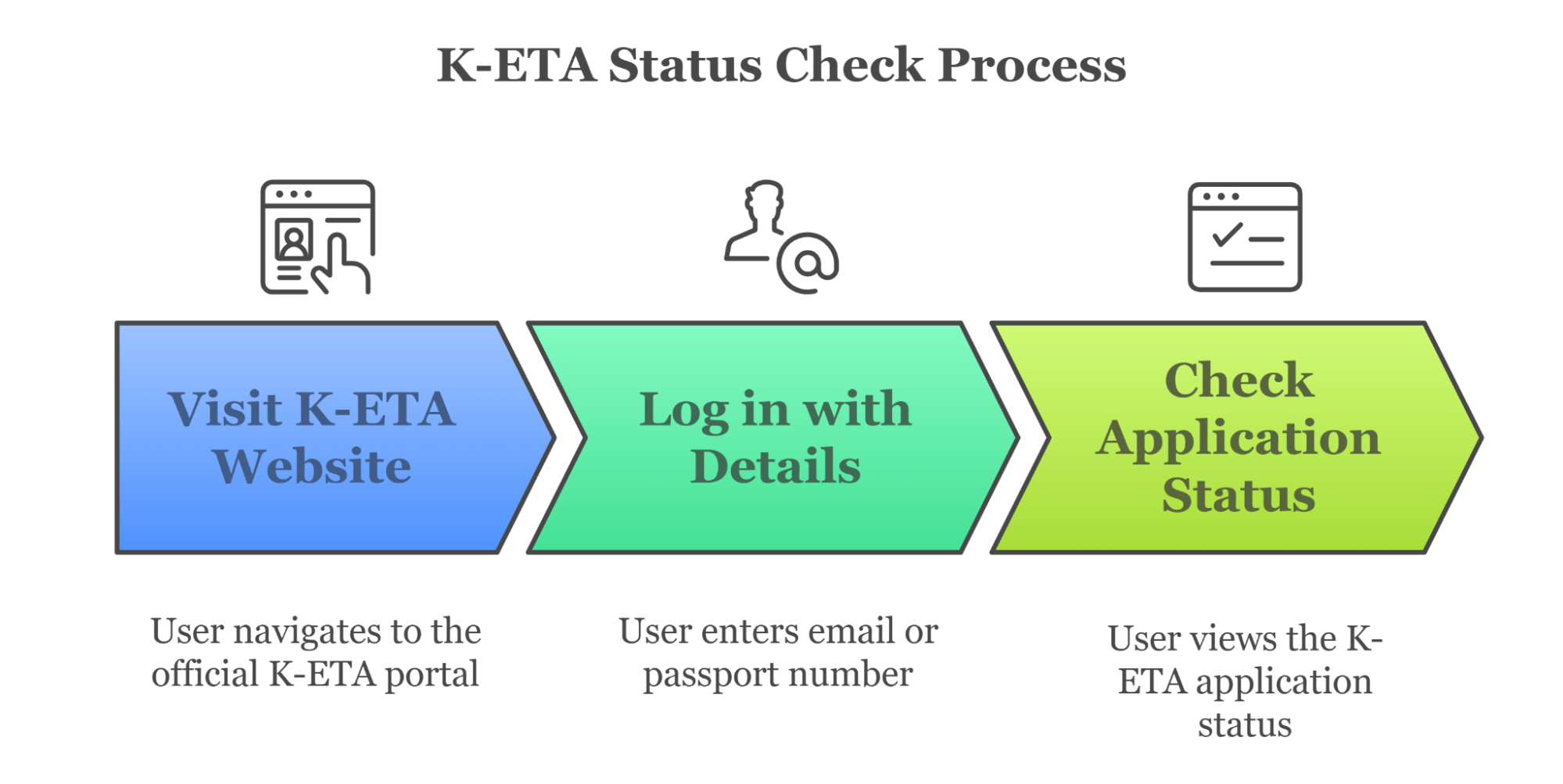
If your application is still under review, be sure to check back after a few days. Approval usually takes about 72 hours, though delays may occur during peak travel seasons.
Through the South Korean Embassy or Consulate
If you submitted your application through a South Korean embassy or consulate, checking your eTA status will require direct contact with the consulate where you applied. You can either call or email the embassy for status updates. Most South Korean embassies will provide a tracking system or will respond to inquiries about the status of your eTA application.
Steps:
- Find the relevant contact details: Visit the embassy’s website for their contact information or consult the Ministry of Foreign Affairs website to find the nearest South Korean embassy or consulate.
- Prepare your details: Have your passport number, eTA reference number, and the date you submitted your application handy. The embassy may ask for these details to locate your application in their system.
- Contact the embassy: Reach out via phone or email to inquire about your eTA status. Be polite and clear about your request, providing all necessary information for a quicker response.
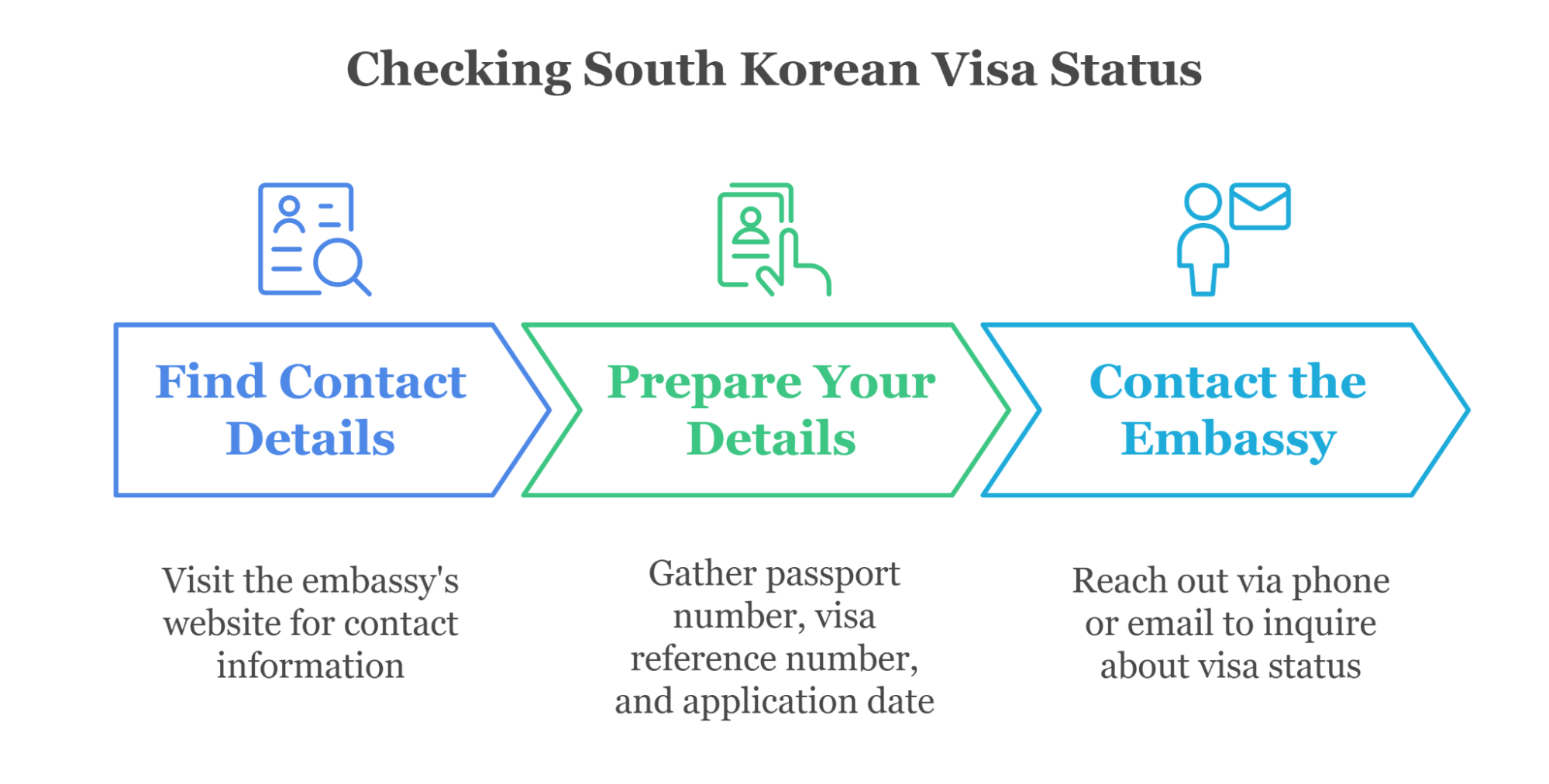
It’s worth noting that response times can vary depending on the embassy’s workload, so it’s a good idea to check every few days.
eTA Application Center (VAC) Status Check
If you applied for a South Korean eTA through a eTA Application Center (VAC) like VFS Global or TLScontact, you can check your eTA status by using the VAC’s tracking system. VACs are third-party agencies that assist with eTA application processing, but they still work closely with South Korean embassies to handle applications.
Steps:
- Visit the VAC’s website: Go to the website of the eTA Application Center where you submitted your application (e.g., VFS Global or TLScontact).
- Log in or use the tracking system: If you have an account, log in to track your eTA status. Otherwise, use the reference number or tracking code you received when submitting your application.
- Check the status: The VAC will show the current status of your eTA application, whether it’s in progress, approved, or denied.
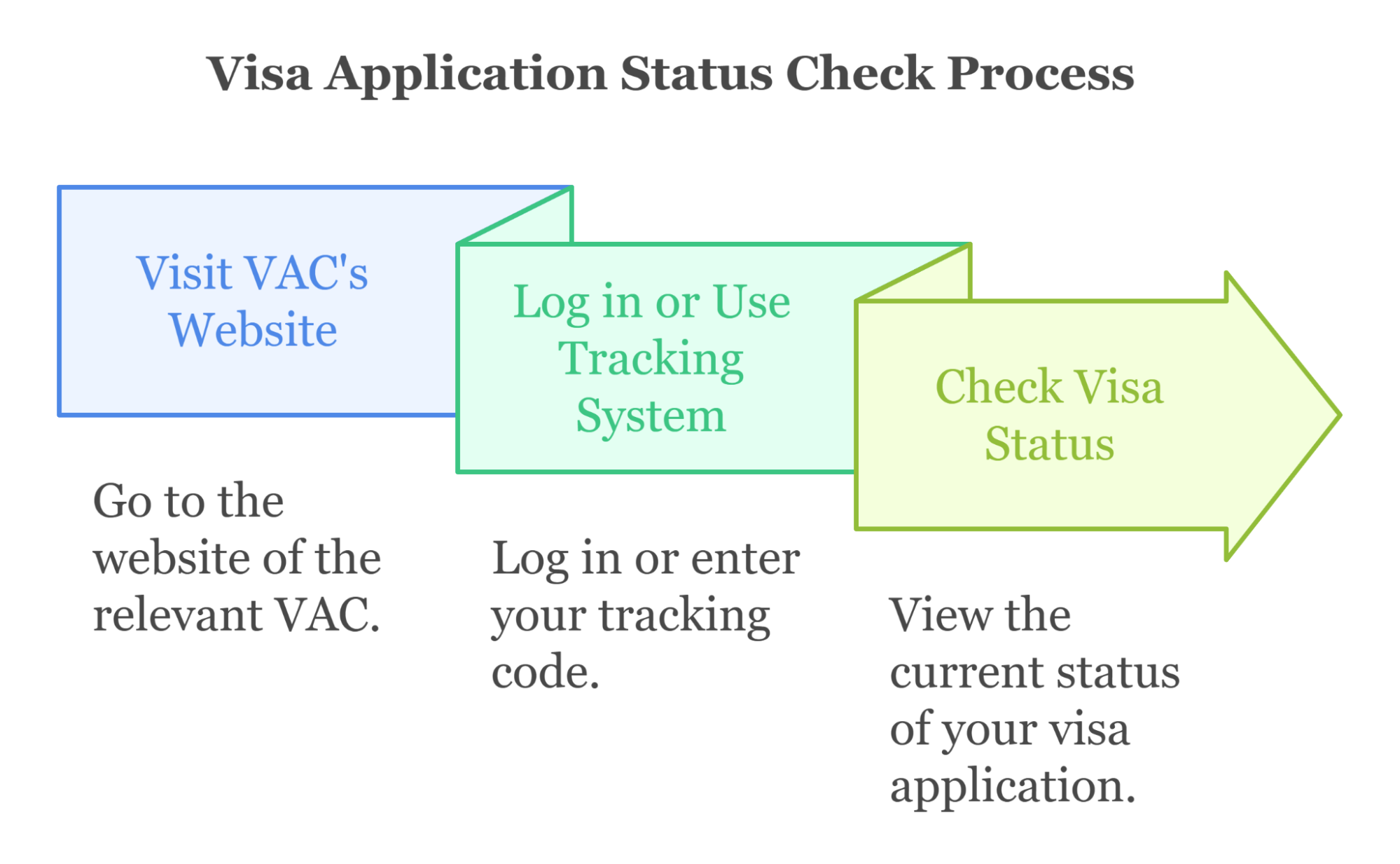
Keep in mind that it might take up to a few days after submission for the status to appear in the VAC’s system, so give it some time before checking.
South Korea eTA Application Tracking System
For some applicants, South Korea provides a direct eTA application tracking system. If you applied for your eTA through a consulate or the official South Korean eTA website, you might be able to track your application status through an online portal.
Steps:
- Go to the official eTA tracking portal: Check the official website for a dedicated eTA tracking page.
- Enter your details: Provide your application number, passport number, or other required information to track your application.
- View your application status: You will be notified whether your eTA is still being processed, has been approved, or has been rejected.
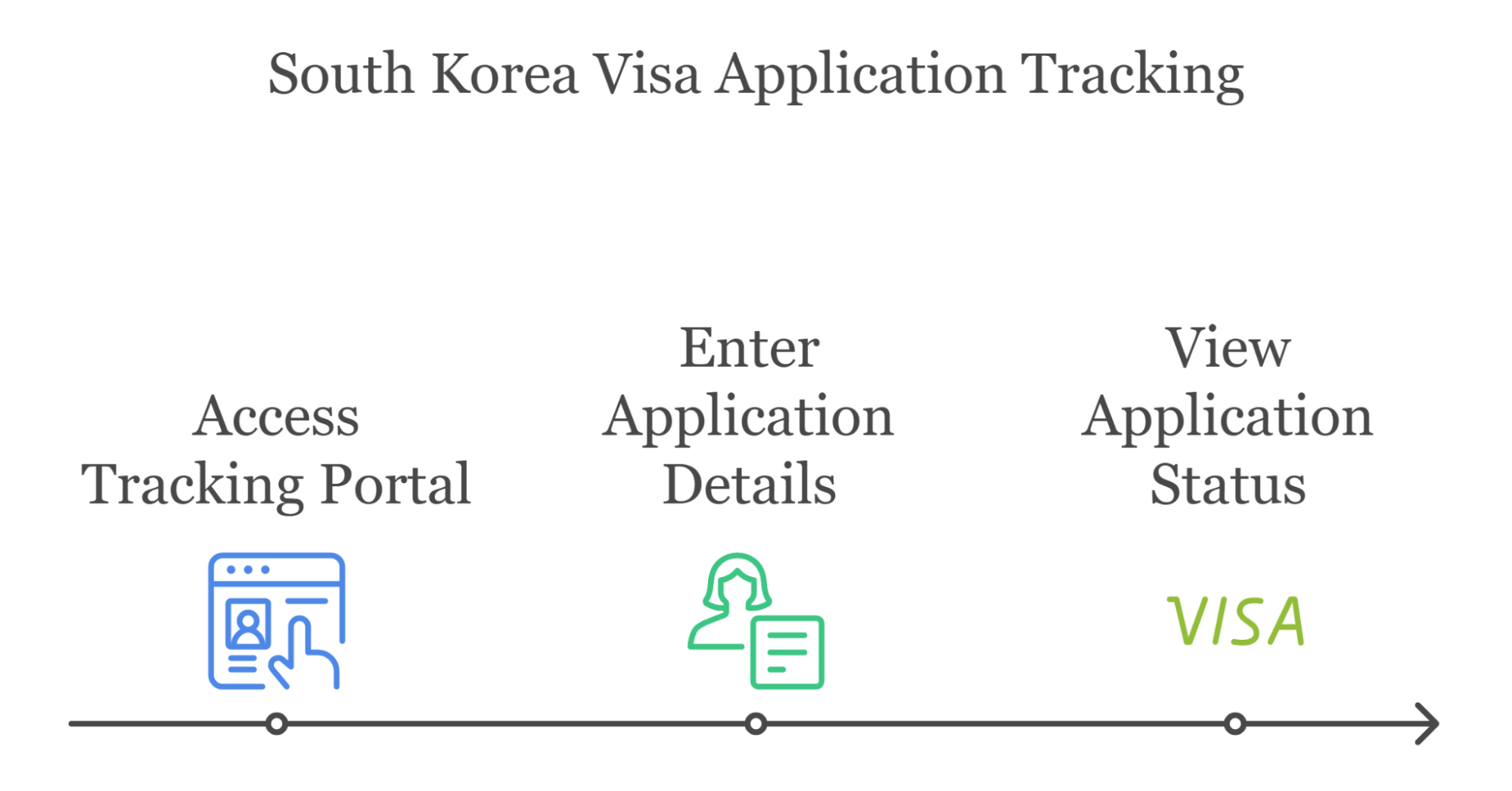
What to Do if Your eTA Status is Pending or Denied
Applying for a eTA can be a nerve-wracking experience, especially if your application is marked as “pending” for an extended period or is ultimately denied. Here’s what you should do in each scenario.
If Your eTA Status is Pending
- Be Patient: eTA processing times can vary depending on several factors, such as the type of eTA you applied for, the volume of applications at the time, and whether additional security or background checks are needed. Some applications may require verification from multiple government agencies, which can extend the processing time.
- Check the Estimated Processing Time: Review the official processing times for your specific eTA category on the website of the South Korean embassy, consulate, or eTA Application Center (VAC). If your application is still within the standard processing period, it is best to wait before taking further action.
- Look for Requests for Additional Information: Sometimes, pending applications are delayed due to missing documents or a need for further clarification. Regularly check your email (including spam or junk folders) and any online eTA tracking portals for updates.
- Politely Inquire About Your Application Status: If your application has exceeded the normal processing time without an update, consider contacting the embassy, consulate, or VAC where you submitted your application. When inquiring:
- Be professional and polite in your request.
- Provide your application reference number, passport details, and the date you submitted your application.
- Ask whether any additional documentation is needed and if there is an estimated time frame for a decision.
What to Do If Your South Korea eTA Application Is Denied
Having your South Korea eTA application denied can be frustrating, but it doesn’t mean the end of your travel plans. By understanding the reasons for the rejection and taking the right steps, you can improve your chances of success in future applications. Here are three key steps to take after a eTA denial:
Review the Rejection Notice Carefully
The embassy provides a written reason for your eTA denial, often due to missing documents, weak travel intent, financial issues, or past violations. Identifying the exact reason helps you address it effectively.
Determine If You Can Appeal or Need to Reapply
Some eTAs allow appeals, while others require reapplication. Check embassy guidelines and, if needed, submit stronger supporting documents to improve your chances.
Strengthen Your Application Before Reapplying
To prevent another rejection, correct previous mistakes, provide accurate information, submit stronger documents (e.g., financial proof, ties to your home country), and seek expert advice if needed..
Tips for Checking Your eTA Status
Keeping track of your eTA application status is essential to ensure a smooth and timely process. Here are some practical tips to check your eTA status efficiently:
- Use the Official Online Tracking System: Visit the official embassy, consulate, or eTA Application Center (VAC) website. Enter your reference number and passport details to check your status.
- Check Your Email Regularly: Embassies send updates via email, including requests for more documents. Check your inbox and spam folder frequently.
- Contact the Embassy or VAC: If processing exceeds the usual time, contact the embassy or VAC. Have your reference number and passport details ready.
- Check With Your Travel Agency or eTA Consultant: If you applied through an agency, they may have tracking tools or direct embassy contacts for updates.
- Verify Requests for Additional Information:Delays may be due to missing documents. Check your email or application portal and submit requested information promptly.
- Be Patient and Monitor Processing Times: Processing varies due to volume and background checks. If still within the standard timeframe, avoid frequent follow-ups.
- Look for Status Updates in Person (If Allowed): Some embassies allow in-person inquiries. Check if an appointment is needed and bring application details.
- Beware of Scams and Unofficial Sources: Use only official government websites for tracking. Avoid unauthorized sites requesting personal or payment details.
Frequently Asked Questions
eTA processing times vary based on the type of eTA, application volume, and individual background checks. Typically, it can take anywhere from a few days to several weeks. Check the official website of the embassy or consulate where you applied for estimated processing times.
Most embassies and eTA Application Centers (VACs) provide an online tracking system. Visit the official website, enter your application reference number and passport details, and follow the instructions to check your status.
If your eTA is still under processing beyond the normal timeframe:
Check if additional documents have been requested.
Contact the embassy, consulate, or VAC for an update.
Be patient, as background checks or administrative processing may take extra time.
Review the rejection notice carefully to understand the reason.
If allowed, you may appeal the decision or reapply with stronger supporting documents.
Address any missing or incorrect information before submitting a new application.
Some embassies offer expedited processing for an additional fee, but this is not always available. Ensuring your application is complete, accurate, and includes all required documents can help avoid delays.
Content Disclaimer: Although this information was last updated in February 2025, we recommend verifying with the appropriate agencies, embassies, and airlines to ensure complete accuracy regarding your travel plans.


To help us improve